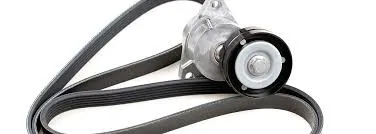- Arabic
- French
- Russian
- Spanish
- Portuguese
- Turkish
- Armenian
- English
- Albanian
- Amharic
- Azerbaijani
- Basque
- Belarusian
- Bengali
- Bosnian
- Bulgarian
- Catalan
- Cebuano
- Corsican
- Croatian
- Czech
- Danish
- Dutch
- Afrikaans
- Esperanto
- Estonian
- Finnish
- Frisian
- Galician
- Georgian
- German
- Greek
- Gujarati
- Haitian Creole
- hausa
- hawaiian
- Hebrew
- Hindi
- Miao
- Hungarian
- Icelandic
- igbo
- Indonesian
- irish
- Italian
- Japanese
- Javanese
- Kannada
- kazakh
- Khmer
- Rwandese
- Korean
- Kurdish
- Kyrgyz
- Lao
- Latin
- Latvian
- Lithuanian
- Luxembourgish
- Macedonian
- Malgashi
- Malay
- Malayalam
- Maltese
- Maori
- Marathi
- Mongolian
- Myanmar
- Nepali
- Norwegian
- Norwegian
- Occitan
- Pashto
- Persian
- Polish
- Punjabi
- Romanian
- Samoan
- Scottish Gaelic
- Serbian
- Sesotho
- Shona
- Sindhi
- Sinhala
- Slovak
- Slovenian
- Somali
- Sundanese
- Swahili
- Swedish
- Tagalog
- Tajik
- Tamil
- Tatar
- Telugu
- Thai
- Turkmen
- Ukrainian
- Urdu
- Uighur
- Uzbek
- Vietnamese
- Welsh
- Bantu
- Yiddish
- Yoruba
- Zulu
Awst . 13, 2024 12:42 Back to list
Exploring the Benefits and Applications of Small Flat Belts in Modern Machinery
Small Flat Belts An Overview of Their Applications and Advantages
Small flat belts are an essential component in various mechanical systems, playing a crucial role in the transfer of power and motion across different machinery. These belts are typically made from materials like rubber, polyurethane, or specialized synthetic compounds, offering remarkable flexibility and durability. Their design allows for optimal performance in a multitude of applications, making them a popular choice in industries ranging from manufacturing to automotive.
Structure and Characteristics
The small flat belt is characterized by its thin and wide design, which provides a larger surface area for contact with pulleys and other components. Unlike traditional round belts, flat belts have a uniform thickness, allowing for smooth and efficient power transmission. The surface texture of the belt is engineered to enhance grip, reducing the chances of slippage during operation. This is particularly beneficial in high-speed applications where consistent performance is essential.
The flexibility of small flat belts enables them to navigate around pulleys with varying diameters and shapes, accommodating a variety of machine designs. They can be manufactured in custom lengths and widths to suit specific operational needs, providing versatility that is appreciated across different sectors.
Applications
One of the primary applications of small flat belts is in conveyor systems. Food processing, packaging, and material handling industries utilize these belts to transport goods seamlessly and efficiently across production lines. The flat surface ensures that products remain stable while moving, preventing damage during transit.
In the automotive industry, small flat belts are utilized in various systems, including engines and transmission setups. They assist in the transfer of power from the engine to different components, ensuring that systems like alternators, water pumps, and air conditioning units function effectively. The reliability of flat belts in these applications is vital, as any failure can lead to significant operational downtime and increased maintenance costs.
small flat belts

Small flat belts are also commonly found in woodworking and textile industries. In woodworking machines, they drive saws and other equipment, ensuring precise operations. Similarly, in textile machinery, flat belts play a crucial role in the weaving process, providing the necessary power to create intricate patterns and designs.
Advantages
The advantages of using small flat belts are numerous. Their design allows for easy installation and maintenance, minimizing downtime and ensuring that operations run smoothly. The absence of cogs or teeth means that these belts can be more flexible and versatile than alternatives like toothed belts, which often require precise alignment and tension.
Furthermore, small flat belts are generally quieter during operation, contributing to a more pleasant working environment. Their durability, combined with resistance to wear and environmental factors, means they can operate efficiently over extended periods, reducing the frequency of replacements and associated costs.
Another significant advantage is the efficiency in power transmission. Small flat belts can transmit power over long distances with minimal loss, contributing to overall energy efficiency in manufacturing processes. This is particularly important in today's environmentally-conscious landscape, where reducing energy consumption and improving sustainability are high priorities.
Conclusion
In summary, small flat belts are pivotal in a wide range of mechanical applications, offering unique benefits that enhance operational efficiency and reliability. From conveyor systems to automotive applications, their versatility and durability make them an invaluable component in many industries. As technology continues to evolve, the demand for these belts is likely to grow, further solidifying their role in modern engineering and manufacturing processes. Whether you are designing new machinery or maintaining existing systems, small flat belts will remain a key factor in ensuring optimal performance and productivity.
-
Korean Auto Parts Timing Belt 24312-37500 For Hyundai/Kia
NewsMar.07,2025
-
7PK2300 90916-T2024 RIBBED BELT POLY V BELT PK BELT
NewsMar.07,2025
-
Chinese Auto Belt Factory 310-2M-22 For BMW/Mercedes-Benz
NewsMar.07,2025
-
Chinese Auto Belt Factory 310-2M-22 For BMW/Mercedes-Benz
NewsMar.07,2025
-
90916-02660 PK Belt 6PK1680 For Toyota
NewsMar.07,2025
-
drive belt serpentine belt
NewsMar.07,2025

